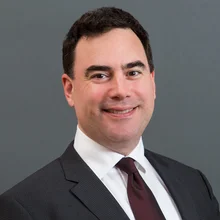
This article was paid for by a contributing third party.More Information.
A not-so-secret recipe for success: Beacon's cloud-based quant platform

The cloud-based quant platform offered by Beacon shares an architecture with the systems that sharpened Goldman Sachs and JP Morgan’s competitive edge. Chief operating officer Mark Higgins talks about how banks can deliver trading desk tools to their clients and make the move to the cloud.
How do you explain the interest Goldman Sachs and JP Morgan have generated in making their systems available to clients?
Mark Higgins: SecDB is famous as the ‘secret sauce’ behind Goldman’s trading businesses. That’s why JP Morgan created Athena, which played a crucial role in helping JP Morgan catch up with Goldman in businesses such as commodities and foreign exchange. However, most people still don’t understand what makes those systems so powerful.
Can you help lift the veil?
Mark Higgins: Part of what made SecDB so valuable was that all the firm’s risks were captured in a single consistent system. That enabled Goldman to manage risk more accurately than its rivals. Systems such as SecDB provide the right balance of control and innovation that makes this possible – controlled enough to be trusted as the primary source of risk and positions, yet able to adapt to ever-changing requirements at the speed required by the front office.
A compelling advantage in today’s technology-driven environment, how do systems such as SecDB make this work?
Mark Higgins: They share an architectural approach in which the core of the system is a quant platform that delivers enterprise technology components so the quants can focus on solving business problems instead of becoming lost in a maze of data, infrastructure and controls. This approach supports a particular organisational model for developers, where a single team can own the entire stack from analytics libraries all the way through to applications. When a single team sits next to users, develops the whole stack and performs front-line support, the team builds a deep understanding of its business while also being given an incentive to build maintainable software. That structure results in more commercial applications and lower costs.
What advice can you give those looking to emulate this success?
Mark Higgins: You need to combine three components: the organisation, the integrated developer platform and the end-user applications. Too often, people focus just on the end-user applications. You should not be afraid to bring in outside help, and we help our clients navigate all these components.
What trends and challenges do you see with banks externalising their technology?
Mark Higgins: Many banks have powerful tools they would like to make available to their clients; these tools drive flow to their market-making businesses in a world where dealers show similar spreads and offer similar products. Clients like the idea but are apprehensive about giving a particular dealer a view of their entire portfolio – including trades made with other dealers. Adding a third-party service between them helps in terms of data confidentiality as well as easing the deployment of in-house analytics to clients.
Many financial institutions have been trying to migrate technology infrastructure to the cloud. What are the benefits of this move, and what roadblocks stand in their way?
Mark Higgins: Using the cloud means renting infrastructure as you need it in a cloud vendor’s data centre – pay-as-you-go compute and storage – rather than suffering up-front capital outlays to buy fixed hardware and host it in an institution’s data centre. The benefits include lower costs, as you pay only for the time you use it; more flexibility, as you can quickly spin up large amounts of new infrastructure to test computationally expensive ideas quickly; and reduced system-administrator overhead as the cloud vendor manages equipment on your behalf.
There are two main issues here. The first is security: you need to assume a worst-case scenario in which the computer you rented is not cleansed properly before being handed off to someone else. This constraint implies a very different security infrastructure to that banks currently apply to their internal networks. The second is cultural: infrastructure management in the cloud can be largely automated, which means a much smaller group of developers can take the place of a large group of systems analysts. Financial institutions often do not have the internal resources to be effective in those roles.
What do you think the future holds for bank technology?
Mark Higgins: Banks will migrate onto cloud vendors for most of their infrastructure; the benefits are too compelling, even if it takes 10 years to effect. They will also deliver more of their internal tools to their clients, using web applications as the front end and relying on third parties to mediate the trust issue around client data access. Finally, banks will continue to expand their use of open-source technologies to obtain cutting-edge functionality and access to trained developers.
About the author

Before co-founding Beacon in 2014, Mark Higgins spent eight years at JP Morgan, launching and delivering the Athena project, co-heading the quantitative research group for the investment bank and running the electronic market-making business for currency options. Prior to JP Morgan he spent eight years at Goldman Sachs as a desk strategist on the foreign exchange and interest rate market-making desks.
Beacon was named Fintech start-up of the year at the Risk Awards 2017.
Sponsored content
Copyright Infopro Digital Limited. All rights reserved.
As outlined in our terms and conditions, https://www.infopro-digital.com/terms-and-conditions/subscriptions/ (point 2.4), printing is limited to a single copy.
If you would like to purchase additional rights please email info@risk.net
Copyright Infopro Digital Limited. All rights reserved.
You may share this content using our article tools. As outlined in our terms and conditions, https://www.infopro-digital.com/terms-and-conditions/subscriptions/ (clause 2.4), an Authorised User may only make one copy of the materials for their own personal use. You must also comply with the restrictions in clause 2.5.
If you would like to purchase additional rights please email info@risk.net